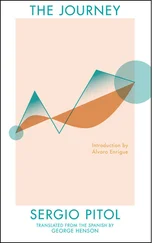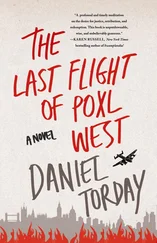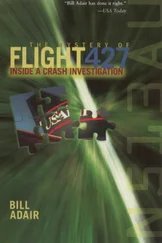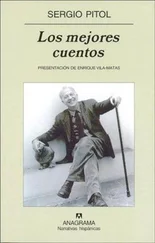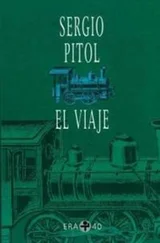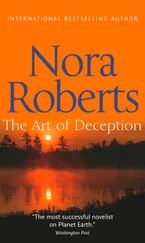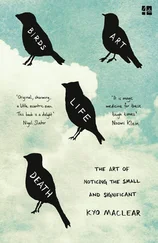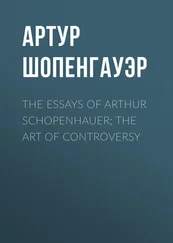Sergio Pitol - The Art of Flight
Здесь есть возможность читать онлайн «Sergio Pitol - The Art of Flight» весь текст электронной книги совершенно бесплатно (целиком полную версию без сокращений). В некоторых случаях можно слушать аудио, скачать через торрент в формате fb2 и присутствует краткое содержание. Год выпуска: 2015, Издательство: Deep Vellum, Жанр: Современная проза, на английском языке. Описание произведения, (предисловие) а так же отзывы посетителей доступны на портале библиотеки ЛибКат.
- Название:The Art of Flight
- Автор:
- Издательство:Deep Vellum
- Жанр:
- Год:2015
- ISBN:нет данных
- Рейтинг книги:5 / 5. Голосов: 1
-
Избранное:Добавить в избранное
- Отзывы:
-
Ваша оценка:
- 100
- 1
- 2
- 3
- 4
- 5
The Art of Flight: краткое содержание, описание и аннотация
Предлагаем к чтению аннотацию, описание, краткое содержание или предисловие (зависит от того, что написал сам автор книги «The Art of Flight»). Если вы не нашли необходимую информацию о книге — напишите в комментариях, мы постараемся отыскать её.
The first work in Pitol's "Trilogy of Memory," The Art of Flight imaginatively blends the genres of fiction and memoir in a Borgesian swirl of contemplation and mystery, expanding our understanding and appreciation of what literature can be and what it can do.
The Art of Flight — читать онлайн бесплатно полную книгу (весь текст) целиком
Ниже представлен текст книги, разбитый по страницам. Система сохранения места последней прочитанной страницы, позволяет с удобством читать онлайн бесплатно книгу «The Art of Flight», без необходимости каждый раз заново искать на чём Вы остановились. Поставьте закладку, и сможете в любой момент перейти на страницу, на которой закончили чтение.
Интервал:
Закладка:
As an adolescent, reading all of that meant nothing; it did not exist. What is astonishing, however, was sharing in some way the fate of an exceptional man and his capacity for adventure; a man born not to obey orders of which his conscience would not have approved in advance; who had known prison, poverty, victory; who had participated in conspiracies and uprisings; a man able to relate the accomplishments and vicissitudes of his political activity with the same intense mystical aura with which he spoke of his philosophical discoveries and amorous exploits.
I was excited to learn, for example, that Vasconcelos had crossed most of the country on horseback, accompanied by a small band of loyalists and his mistress, Adriana — a woman who on that occasion was worse than the most destructive plague imaginable — venturing for days and days along the riskiest trails of the Sierra Madre, fleeing his enemies, constantly at risk of being ambushed, until finally crossing the Rio Grande and knowing that for the time being his life was safe; only to then find him almost immediately in the library of San Antonio, Texas, gathering materials for his Aesthetics ; and a few weeks later in Paris, attending the historic premiere of Stravinsky’s The Rite of Spring . Such was his life, and it was prodigious; that one day he would be conspiring for or against Pancho Villa, and in the next chapter studying Pythagoras or Plotinus in New York, or touring the Metropolitan Museum after diligently reviewing Burckhardt to better understand the painters of the Italian Renaissance. The upheavals in Mexico and his visions of the wider world alternate and overlap constantly. Sexual passion, intellectual desire, and a resolve to transform the country through spirit are the constants of the young Vasconcelos. Another, which spans everything, is the notion of “Glory,” which he considers inherent to his person; he senses it from childhood, develops it in his youth, and defends it by any means necessary in the moments following the disaster.
That first reading, of course, was incomplete, and could not be otherwise. But it left me with the impression of having come into contact with a man of surprising originality and multiple visions. Further readings have refined, stylized, or altered that view. I do not share the majority of the opinions that Vasconcelos sustains; despite that, however, my astonishment, admiration, and recognition of his courage to confront the world and, above all, his refusal to follow the herd, still remain.
In 1956, at the request of the editor Rafael Giménez Siles, I visited Vasconcelos on two occasions at the National Library, the Biblioteca México , to clarify some doubts that arose while correcting the proofs of the first volume of his Collected Works , which were being prepared by one of the many publishing houses belonging to Don Rafael. He had put me in charge of the first volume. The purpose of the visits, if I remember correctly, was to standardize the spelling of some names that the author employed arbitrarily. On both occasions, he received me in his office, in the company of the ambassador of the Dominican Republic. Vasconcelos had become in his final years a very pleasant man, always smiling, but at the same time very distant. He seemed not to take interest in the fate of that edition that would finally bring together all his books, some having been out of circulation for thirty or forty years. I stressed the desirability of standardizing the different ways he had written some geographical or biographical names and, above all, the various spellings of Russian and Asian names, sometimes copied from a French or English transcription, as well as obvious misprints in the original editions. He asked me to leave him the proofs and the list of possible corrections and return a few days later to pick them up. I went to see him a second time and again found him talking with the same diplomat. He apologized for not being able to review the papers. He then began to review the proofs with me, as well as the list that the proofreader had sent. With each of the items he would pause thoughtfully for a moment, continue his interrupted conversation with Trujillo’s ambassador, and finally give his opinion; after five or six consultations of a relatively long list, he said there was no point in worrying about such minutiae, that the publisher should decide for him, that he had full confidence in Giménez Siles, and when it was all said and done the only thing that mattered were his thoughts and not such insignificant trivialities.
I had long since ceased to admire him. His articles in the press were dreadful. His defense of Francoism, of the totalitarian regimes in Latin America, his sympathies with the most reactionary sectors within the country, his raging anti-indigenism, his anti-Semitism, his disdain for modern literature — all preached in a tiresome and humorless way — turned their reading into a tedious enterprise. His philosophical books, of which he had long boasted, no longer interested anyone; his books on the history of Mexico no longer convinced anyone but the most intractable conservatives. His stories and literary meditations had aged. The youth had turned their back on him, and even his memoirs had paid a heavy price. None of this seemed to discourage him. On the contrary, he enjoyed the fight. If for a quarter century he had continuously said that Mexico was a debased nation and that all the revolutionary governments after Madero had been made up of thieves and scoundrels, he accepted as acknowledgment of his integrity the insults that the nation and the handful of crooks and incompetents hurled at his person. He seemed to be aware of the role he played: even if Mexican society no longer supported him and rejoiced in his downfall, even if it turned its back when he was ready to redeem it, even if politicians and their followers regarded him as a clown (a term that seemed to offend him more than any other, having said so many times, he continued to behave as he liked, in order to show what the politicians had managed to do to the country and even to him. If the world had grown debased and unhinged, if reason had lost its way, he would play a role commensurate with the circumstances. The real culprit was not the individual but the machinery of corruption manufactured by the governments that betrayed the Revolution.
To understand Creole Ulysses and his other memoirs it is worth recalling certain events. Vasconcelos begins to write his first volume in 1931, two years after his defeat in the presidential elections. He never recognized the official results. During the campaign he and his supporters were repeatedly harassed and ridiculed. Some Vasconcelists were killed, many others imprisoned. José Vasconcelos had been, at home and abroad, the great symbol of the revolution: educator of the nation, literary apostle, thinker, and, most importantly, the creator of an authentic and extraordinary cultural renaissance in the country, an effort in which all his gifts and prestige came together. Even now, our debt to the period of cultural renewal initiated by him seventy ago years is still immense. Universal education and textbook distribution became national causes during that period. They were christened “the years of the eagle” by Claude Fell in an excellent book on the period, borrowing an exhortation that Vasconcelos himself used with teachers. Although immense, it was the only triumph of his political life. The three times he ran for elected office he was defeated. First, as a potential candidate for a deputy position during the period of Francisco Madero; then in 1924, following his brilliant tenure in the Secretariat of Public Education, as candidate for governor of Oaxaca; and finally in 1929 as candidate for the presidency of the Republic. The rest is known by everyone: long years of exile, vain attempts to maintain a political presence in Mexico from abroad, long stays in Spain, speaking tours in South America, an invitation to the United States where several universities opened their doors to him. Gradually, active politics began to take a backseat, and the void left by that pursuit was filled by what he considered his essential vocation: philosophy. During this period, while working on his Aesthetics , he also wrote his autobiographical books to which he attributed a rather utilitarian character and in which he defended himself against the smear campaign orchestrated by his detractors; at the same time he went on the offensive and began to war ferociously against his enemies, old and new — those who had suddenly become turncoats. In his zeal to disparage his detractors he committed more than one injustice, sometimes by mere whim, or out of personal disagreement — and even over aesthetic disagreements.
Читать дальшеИнтервал:
Закладка:
Похожие книги на «The Art of Flight»
Представляем Вашему вниманию похожие книги на «The Art of Flight» списком для выбора. Мы отобрали схожую по названию и смыслу литературу в надежде предоставить читателям больше вариантов отыскать новые, интересные, ещё непрочитанные произведения.
Обсуждение, отзывы о книге «The Art of Flight» и просто собственные мнения читателей. Оставьте ваши комментарии, напишите, что Вы думаете о произведении, его смысле или главных героях. Укажите что конкретно понравилось, а что нет, и почему Вы так считаете.

